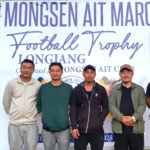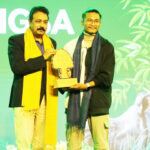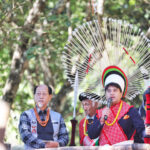International Human Rights Day is observed by the international community every year on 10 December. It commemorates the day in 1948 the United Nations General Assembly adopted the Universal Declaration of Human Rights. The Universal Declaration of Human Rights sets out a broad range of fundamental rights and freedoms to which all of us are entitled. It guarantees the rights of every individual everywhere, without distinction based on nationality, place of residence, gender, national or ethnic origin, religion, language or any other state. The global observance of this day serves as a reminder of the importance of human rights, emphasizing equality and dignity of all people. International Human Rights Day is dedicated to promoting and safeguarding the fundamental rights and freedom that are inherent in every human being. It provides an opportunity to raise awareness about human rights issues and advocate for positive change.
Awareness on ‘Human Rights’ education and its values is still lacking in Nagaland:
The churches, educational institutions and colleges are to play an active role in promoting peace, justice and social transformation. Lacking awareness on ‘Human Rights’ in Nagaland leads to much of human rights violation such as atrocities and barbaric killings and to cite a few incident; the murder of nine persons whose bodies were recovered by Nagaland Police at Pachaspura near Chumukedima on 3rd Jan, 2014, the barbaric attempt to murder on a young student on 28th Dec 2013 who later succumbed to his injuries, the 21st Dec 2013 incident where the passengers of a Zunheboto bound taxi were assaulted and injured, several rape cases including minor, the atrocities meted to the Rengma Nagas of Karbi Anglong from 25th Dec 2013 evening onwards where several women and children were mercilessly killed, thousands were displaced and kept in several relief camps, villages burnt, properties such as agricultural products and crops were destroyed. The 5th March incident where a young man was lynch to dead by a mob and the dead body was tied to the railing in Dimapur, Nagaland on 5th March 2015. In a police firing on 31st January 2017 two youth were killed in Dimapur and several of them were injured in Longleng while protesting against ULB election in Nagaland, a heinous crime where three persons were killed by unidentified assailants on 22nd March, 2021 including burning of two vehicles where two bodies were recovered near one of the burnt vehicles, several precious innocent lives ‘mercilessly gunned down’ by the Para Military Security Forces on 4th December 2021 at Oting village under Mon District, etc. Besides barbaric killings, atrocities on women at home and workplace, insurgency, problems of drugs, rape, alcoholism among youths and adults, child abuse, extortion, delay in receiving justice and growth of non-humanitarian values are dear indication of violation of human rights, which have seriously disturbed the peace and tranquility of the State. One of the main problems faced by the citizens of the state is the existence of several insurgent groups and the Central Government imposing the Armed Forces (Special Power) Act, 1958, amended in 1972. A major theme of the human rights discourse is the Armed Forces (Special Power) Act of 1958 widely seen in the North-East as ‘draconian’. Rights and duties are one of the primary concerns of human civilization. These are closely connected with liberty, growth, development, dignity, responsibility and welfare of the general community. However, knowledge about human rights is not popular among the citizens of Nagaland. As a result, violation of human rights is so common in Nagaland that the purpose of the Universal Declaration of Human Rights is defeated a considerable number of times. The techno-hyped societies are progressing fast but human rights, not only among the illiterate sections but also among the literate and educated ones. Few years ago the official visit of the National Human Rights Commission (New Delhi) to the state capital of Nagaland had recommended incorporating ‘Human Rights Education’ into Nagaland Board of School Education(NBSE) syllabus and asked the NGOs to create more awareness on Human Rights education particularly to the students.
Human Right is a symbol of hope:
To protect human rights is to ensure that people receive some degree of decent, human treatment. However, in many cases public authorities and government officials institute policies that violate basic human rights. Such abuses of power by political leaders and state authorities have devastating effects. Slavery, poverty, physical torture, destruction of property, rape, killing, hunger, sex exploitation, forced labour, child labour, commercial sex exploitation, illiteracy, etc. are against human rights. The crying need of the developing world is to live in peace and harmony, and here human rights and development can move together, provided man is conscious of his rights and his social and national responsibilities. Human rights are a symbol of hope and the need of the hour as violation of human rights has become a day to day event in society. Creating a safe, secured and harmonious environment for the neo-literate is the look of the family, the community, the civilized society and community at large. The Father of the Nation, Mahatma Gandhi, was a great human rights activist who strongly believed and practiced non-violence. One of the great American Presidents, Abraham Lincoln, was a man who had sacrificed his life for the abolition of slavery. Nelson Mandela was one of the great symbols of human rights of our time whose life was committed to human dignity, equality, freedom & justice.
On this occasion of celebrating International Human Rights Day I, Shri. Kezhokhoto Savi as a human rights activist paid my tribute to these great leaders who have sacrificed their lives for human rights to build a world of all human rights for all.



